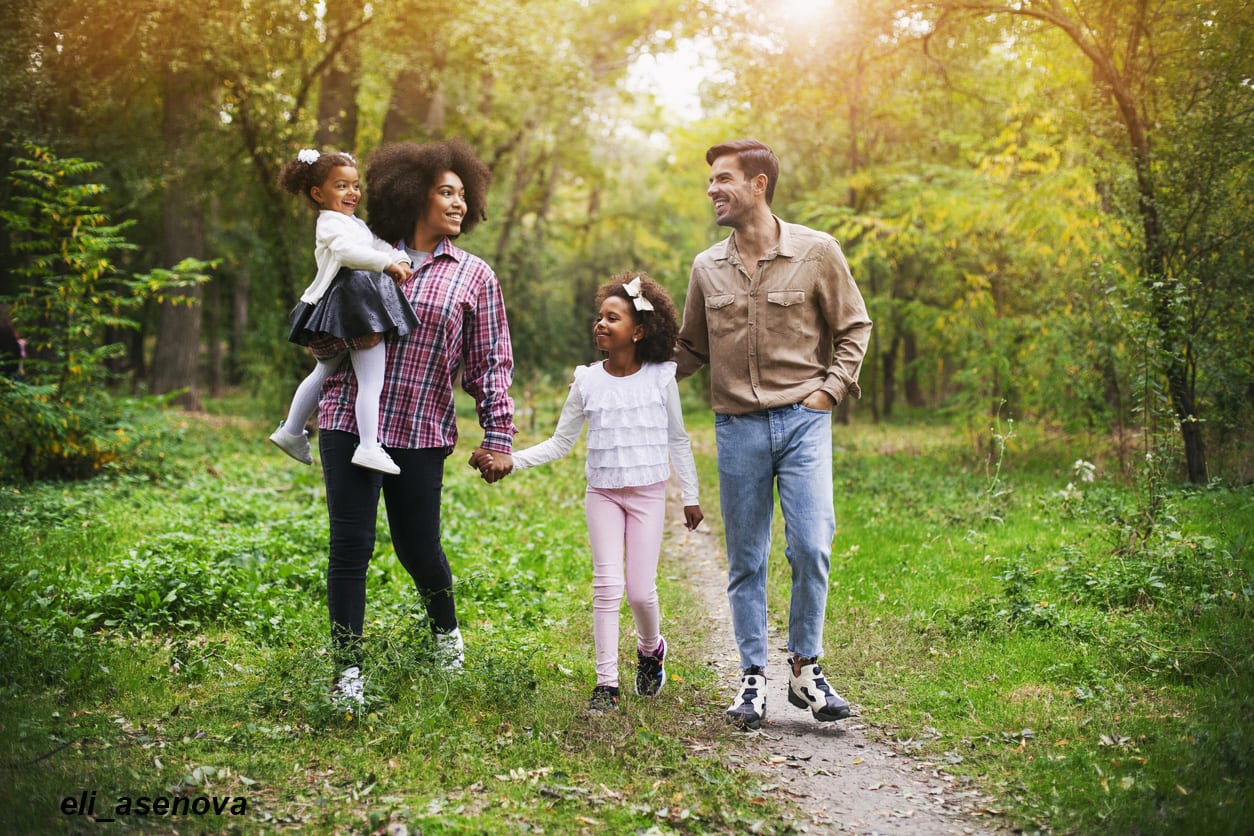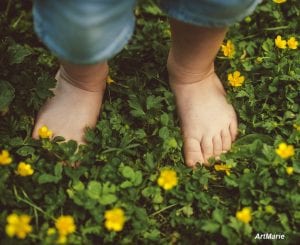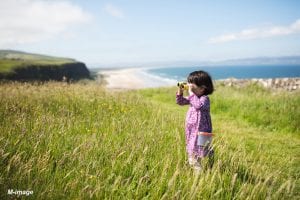
Jun 14, 2020 Contact with Nature Improves Mental Health and Well-Being
With the onset and effort to control the coronavirus, many of us are confined to our homes and isolated from our extended family and social and work contacts that are so central to our lives. For those who have access to the internet and social media, there are new ways to connect by having family chats, meals, and even holiday celebrations by Zoom or the equivalent. Nevertheless, technology can only do so much, and confinement and isolation remain. Having multiple family members in the home and overseeing activities such as the education of children and adolescents can heighten the stress of an already difficult situation and adversely affect one’s mental health. Many of us now are experiencing varying degrees of depression, anxiety, stress, irritability, and loneliness. Maintaining an upbeat mood and feelings of well-being is even more challenging because of the confinement and lack of control over much of our everyday lives. And our situation is heavily influenced by daily, if not moment-to-moment, doses of the news about the progression and disastrous consequences of the virus.
Individuals and families carve out their own ways to manage by searching out and participating in many creative activities. Cooking, exercising, chatting online, playing video games, dressing up, making entertaining family videos, and assorted new activities and variations on old ones, all can help. For some of us in social isolation, exercise, food and rest are among our many options: exercise, a trip to the refrigerator, or a little more rest on the couch. (In my own case, I have been able to integrate these seamlessly by walking briskly to the refrigerator, selecting a little snack, and walking slowly–the cool down phase–back to the couch.)
However, an under-recognized and possibly under-utilized set of options, with far-reaching benefits, are simple contacts with and immersion in nature. Contacts with nature include interacting with living systems in the form of greenery, vegetation, and nonhuman animals in open spaces including parks, gardens, forests, and the wilderness. This can include many activities such as walking through a park where there are trees and vegetation but also viewing surroundings that include nature from one’s home or office windows. The benefits of contact with nature and gardens were widely recognized in many early civilizations (e.g., Persia, China, Greece) and later in many countries in which gardens, parks, and greeneries were incorporated into monasteries and hospitals as explicit efforts to promote tranquility, well-being, and health. What is added to these long historical traditions is scientific research that has elaborated on the scope of the options and their benefits.
 That research has repeatedly shown that contact with nature has many beneficial effects including improved mood, happiness, subjective well-being, sleep, and cognitive functioning as reflected in better memory and attention, reduced distress and feelings of isolation and fewer symptoms of mental disorders including depression and anxiety. I hasten to add that several of the benefits of exposure to nature (e.g., improved subjective well-being and lower stress) are closely linked to physical health and susceptibility to disease. Consequently, the psychological benefits of contacts with nature, hugely important in their own right, are not even the whole story.
That research has repeatedly shown that contact with nature has many beneficial effects including improved mood, happiness, subjective well-being, sleep, and cognitive functioning as reflected in better memory and attention, reduced distress and feelings of isolation and fewer symptoms of mental disorders including depression and anxiety. I hasten to add that several of the benefits of exposure to nature (e.g., improved subjective well-being and lower stress) are closely linked to physical health and susceptibility to disease. Consequently, the psychological benefits of contacts with nature, hugely important in their own right, are not even the whole story.
I would also emphasize the variety of ways in which the benefits of exposure to nature have been studied. First, laboratory studies, showing people photos of nature vs. control scenes (e.g., urban areas) reveal the benefits of exposure to nature. People who view scenes of nature respond better and show more positive mood, less repetitive thinking, and other benefits, even under these highly controlled and artificial laboratory conditions.
Second, there are the naturalistic observational studies that follow individuals who vary in their exposure to nature, either in the past or the present, and then compare them to individuals with little or no such exposure. In such cases, one must control for the many differences between individuals (e.g. income, education, mental health) but these factors can controlled using statistical analysis to separate their influence from the focus of the research, namely, the influence of exposure to the environment.
Finally, and most persuasively, randomized trials that vary the level of nature experiences to which people are assigned are considered the gold standard for testing the impact of specific experimental variables. These studies also confirm the benefits of contact with nature. An example of such a study would involve assigning individuals randomly to walk or exercise in a rural versus urban area and then to compare the impact of these different experiences on a variety of indices of mental health.

The findings from all three types of studies converge: exposure to and contact with nature make a difference and are associated with and lead to improvements in mental health. Moreover, the benefits have been shown for children, adolescents, and adults; for men and women, and across many different countries. Longitudinal findings have also indicated that early experiences with nature can have enduring impact on reducing one’s risk for later mental disorders and substance abuse.
However, it is important to recognize caveats. Contact with nature is not a panacea nor a cure-all for feelings of irritability and stress nor for mental disorders and everything in between. Also, as is true of most, if not all interventions (e.g., aspirin, chemotherapy, plastic surgery, great parenting, the Mediterranean diet, exercise), contact with nature does not guarantee positive outcomes for everyone. Yet, nature contact often does have broad benefits and like the other interventions mentioned above, is not necessarily expensive while being a wise investment in health.
Many basic questions remain. These include:- how and why contact with nature works; what facets (how much exposure, what type of natural setting) are optimal for reaping the benefits of nature exposure; and for whom (ethnic group, geographical location, living conditions) are the benefits most likely to be achieved. Perhaps it is not contact with nature, but rather some other facet such as the increased activity involved in nature exposure (e.g. walks). However, direct tests show that “green exercise” (exercising while in nature) has greater benefits than doing the identical exercises but without any exposure to the natural environment.
We are currently confined and physically (and socially) isolated under the special circumstances of the coronavirus. Yet, even without the virus we have unwittingly become less exposed to nature and have actively sought out confinement of another kind. More than half the world’s population live in urban areas and the percentage increases as many people leave rural life and move to cities for access to employment opportunities, education, health care services, and cultural experiences. Our urban lives are associated with increased time spent indoors (offices, classes), in cars, busses, and trains; and at home or at work in front of computer screens. Exposure to nature in various outdoor activities including camping, visiting parks, or playing outdoors (among children) have decreased and continue to decline. In short, daily life for many, if not most, individuals already involves lower exposure to nature than before, leaving aside the added social isolation and confinement we currently experience.
Among the features of contact with nature is that it can take many forms including access to scenes and scenery from window views, proximity to blue space (e.g., lakes, oceans, and aquatic areas) and access to private gardens in homes or apartments. The task is not just having such opportunities but ensuring one takes advantage of them and takes the time to engage in more nature exposure. Currently, contact with nature is underused and the benefits are under-appreciated. Urban planning and policy often recognize the importance of integrating green space in projects, but at an individual level it would be valuable to do more to promote, foster, and encourage use of natural spaces as part of our everyday lives. Think of contact with nature as a spa for the mind and soul and, as with a spa, not much activity is required—sit there and soak up the ambiance.
A familiar expression in English is to say something is, “a walk in the park” and this refers to something that is very easy to do. What a wonderful guide. To help your sanity, to manage stress, to help maintain a positive mood, or to feel less isolated and confined consider just taking “a walk in the park.” It is easy. If a park is not nearby, walk through nearby gardens, rows of trees, or include in your home scenes of nature. While we are trying to understand why these experiences make a difference, cultural traditions, history, and science have pretty much established that they do.
Resources and Further Reading
Bratman, G. N., Anderson, C. B., Berman, M. G., Cochran, B., De Vries, S., Flanders, J., … & Kahn, P. H. (2019). Nature and mental health: An ecosystem service perspective. Science Advances, 5(7), eaax0903.
Frumkin, H., Bratman, G. N., Breslow, S. J., Cochran, B., Kahn Jr, P. H., Lawler, J. J., … & Wood, S. A. (2017). Nature contact and human health: A research agenda. Environmental Health Perspectives, 125(7), 075001.
Hughes, J., Pretty, J., and Macdonald, D. W. (2013). Nature as a source of health and well-being: is this an ecosystem service that could pay for conserving biodiversity?. Key Topics in Conservation Biology 2, 143. doi: 10.1002/9781118520178.ch9
Marselle, M. R., Irvine, K. N., & Warber, S. L. (2014). Examining group walks in nature and multiple aspects of well-being: A large-scale study. Ecopsychology, 6(3), 134-147.


